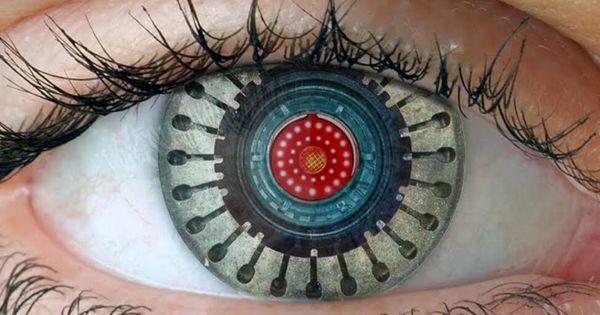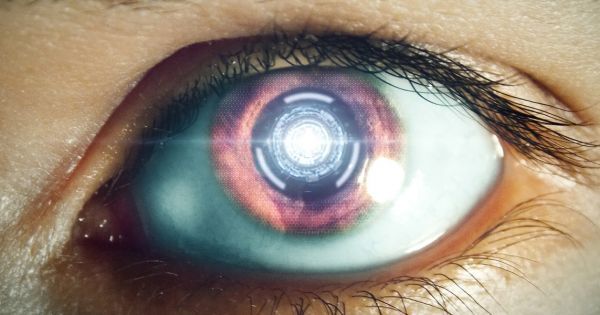A punky warrior races across a barren wasteland, pursued by a hulking cyborg. There’s not much more to go on in the visually stunning Lost Boy, but since it’s a proof-of-concept film, mood and style are the main attraction. It’s by PostPanic Pictures, whose visually-rich short Sundays received feature interest last year.
Category: cyborgs – Page 115
Wearable exoskeleton lets researchers in Russia control a robot in Germany
You know that whole chaos theory idea (okay, we saw it in an Ashton Kutcher movie) about how a butterfly flapping its wings in one part of the world can trigger a hurricane in another?
Well, the 2016 equivalent is a project where scientists in Russia wear an exoskeleton to control a connected robot in Germany.
Named CAPIO, the project is the work of DFKI, a kind of European DARPA focused on building robots for carrying out applications and tasks that can assist humans. One of its robots is called AILA, and is controllable using CAPIO, an eight-contact exoskeleton system that wearers can use to move AILA in real time.
Ghost in the Shell Trailer
Trailer for Ghost in the Shell.
Based on the internationally-acclaimed sci-fi property, Ghost in the Shell follows Major, a special ops, one-of-a-kind human-cyborg hybrid, who leads the elite task force Section 9. Devoted to stopping the most dangerous criminals and extremists, Section 9 is faced with an enemy whose singular goal is to wipe out Hanka Robotic’s advancements in cyber technology.
A couple other actors were first considered before they finally settled on the current cast. Margot Robbie was firstly considered for the lead role of Major (Scarlett Johansson’s role). Matthias Schoenaerts was considered for the male lead of Batou. Pilou Asbæk was cast instead. Sam Riley was in talks for the role of the Laughing Man (Michael Pitt’s role).

Bionic Eyes Are Coming, and They’ll Make Us Superhuman
In Brief:
- Bionic eyes are already in development and could alleviate sight issues for hundreds of millions suffering from visual impairments or blindness.
- The mechanical eyes could also provide enhanced sight so cybernetic humans could see more of the electromagnetic spectrum.
With an estimated 285 million people worldwide with visual impairment, many treatments and technological innovations have long been in development. The panacea of restoring sight to the blind is the stuff of sci-fi: the bionic eye.
Modular Exoskeletons
WeaRobot wants to democratize robotic exoskeletons. They want to make modular exoskeletons, so that is more affordable. The exoskeleton can boost the mobility joint by joint. Just supporting the movement of one knee or one elbow or assembling all modules for a full body exoskeleton. This is targeted at enhancing mobility and function for the growing elderly population.
WeaRobot is breaking apart robotic exoskeletons to make them more affordable and adaptable.
Robotic exoskeletons are electromechanical suits that can give paraplegic people the chance to walk again. Full body suits produce impressive results, such as teaching dormant body parts to move on their own again. But they are expensive, ranging from $40,000 to more than $100,000. Now, a Mexican robotics startup is breaking exoskeletons down into smaller pieces, with the goal of making this medical technology affordable and adaptable.
New bionic eye implant connects directly to brain, allowing blind woman to see shapes & colors
Scientists may have made a significant breakthrough in restoring human sight, as a woman who had been blind for seven years has regained the ability to see shapes and colours with a bionic eye implant.
The 30-year-old woman had a wireless visual stimulator chip inserted into her brain by University of California, Los Angeles (UCLA) surgeons in the first human test of the product. As a result, she could see colored flashes, lines, and spots when signals were sent to her brain from a computer.
The woman, who wished to remain anonymous, suffered no significant adverse side effects in the process, according to a statement.

New Bionic Eye That Connects to The Brain Successfully Restores a Woman’s Sight
In Brief:
- A new visual implant from SecondSight may help restore useful sight in more than 6 million additional people who aren’t candidates for the company’s previous implant model.
- Recently, there are more options being developed to restore both hearing and sight in affected patients, such technology has the potential to improve the quality of life of countless people.

AMA: I’m Zoltan Istvan, a transhumanist US Presidential Candidate. Ask me anything!! : Futurology
Come “ask me anything” right now!!! I’m trying to answer all questions I get asked:
Hi Reddit,
Thank you for having me here. My name is Zoltan Istvan, and I’m a futurist, journalist, and science fiction writer. I’m also the 2016 Presidential candidate for the Transhumanist Party.
For the last 725 days, I have been campaigning full time to spread transhumanism and life extension policies across America and the world. While I never expected to win the US Presidency, my campaign has received a lot of attention—both good and bad—for its emphasis on radical science, technology, secularism, and futurist ideas.
During my campaign, I’ve spoken on transhumanism at the World Bank, consulted with the US Navy on artificial intelligence, got a chip implanted in my hand, interviewed with underground group Anonymous, and drove a coffin-shaped bus called the Immortality Bus across America to deliver a Transhumanist Bill of Rights to the US Capitol. My 20-point political platform has many futurist policies in it, but some of the most important ones are supporting a Universal Basic Income, classifying aging as a disease, legalizing all drugs, creating a Transhumanist Olympics, and taking money from the military and giving it to science.
How nanobionic spinach plants can detect explosives
The strength of spinach isn’t only in its nutrients, but also in its ability to be hacked to function as a sensor, according to researchers at the Massachusetts Institute of Technology. An MIT team used wonder-material carbon nanotubes to give the greens the ability to detect explosives and wirelessly transmit information to a mobile device.
MIT engineers applied a solution of nanoparticles to the underside of the leaves, allowing them to be taken up into the mesophyll layer where photosynthesis takes place. The embedded nanotubes then acted as sensors able to detect nitroaromatic compounds – which are often used in explosives like land mines – in the groundwater taken up by the plants’ roots.
If the chemicals are present in the water the plant is feeding from, the carbon nanotubes in the leaves emit a fluorescent signal that can be picked up with an infrared camera when a laser is shined on the leaves. The researchers hooked up such a camera to an inexpensive Raspberry Pi system and set it to email the user when the compounds were detected.

Would You Like to Be Uploaded to a Computer When You Die?
Rattling around inside a hard drive doesn’t sound like an awful lot of fun — but then, neither does death.
Both eventualities are rather difficult to imagine, but we’ll all have to give them some thought sooner rather than later. Neuroscientist and neuroengineer Randal Koene thinks it’s only going to be another 10 years before we replace parts of the brain with prosthetics.
From there, it’s just a matter of replacing each region systematically, to end up with someone whose brain is immortal and electronic. Could the last person to die have already been born?